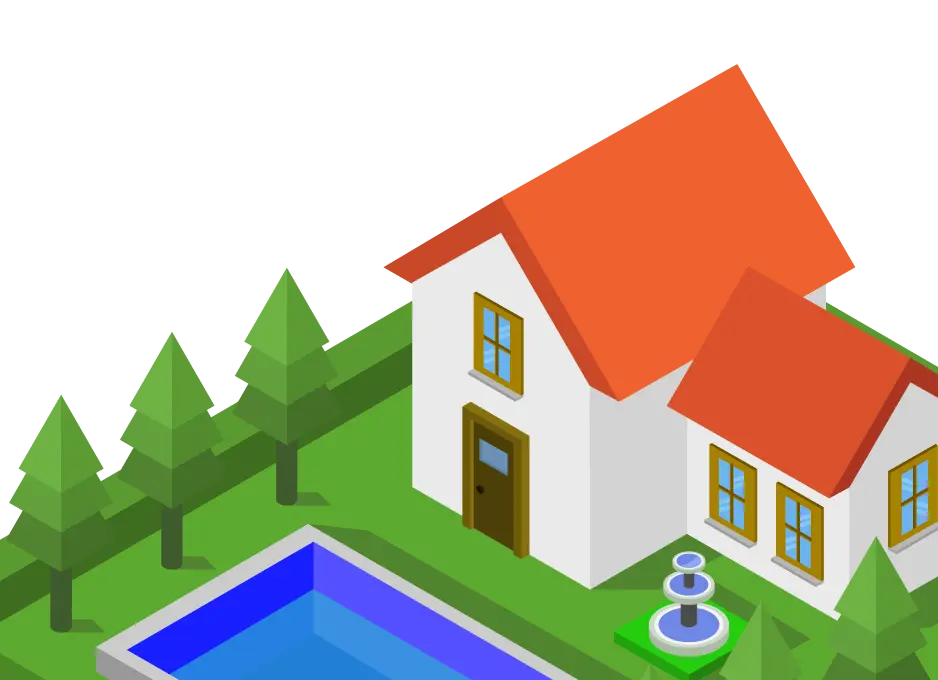Spiders are Friends, not Fiends

Kristen Stevens, BCE (spiders that are not deadly – wolf spider, crevice weaver)
If you have ever seen the movie Finding Nemo, one of my favorite scenes is when the sharks are meeting as a support group for recovering fish-eaters. Their mantra is “Fish are Friends, NOT food!” They are trying to curb their appetite for fish and to be friendlier to them. Many of us really dislike spiders, and some of us may even have arachnophobia (an extreme fear of spiders). Although it is not unreasonable to be afraid of spiders, there are some that are not necessarily “scary.” To take a page from the sharks’ book: they are friends, not fiends. Some of you may be reading this and thinking, “Yeah, right. There is no way I am just going to think that there are ‘good’ spiders out there.” Well, let me tell you about a couple of spiders that may change your mind.
The Blessing of Spiders and How They Contribute to Pest Control
The wolf spider and the crevice weaver are two examples of spiders that are not dangerous but are commonly encountered by pest control professionals. One of my biggest pet peeves as an entomologist is when people call spiders “bugs,” as they are not technically insects. Spiders are actually in the class Arachnida, which also contains other eight-legged creatures such as ticks, mites and scorpions. What sets them apart from insects are their eight legs and two body parts (cephalothorax and abdomen). Insects, on the other hand, have six legs and three body parts: head, thorax and abdomen. Spiders are actually insect feeders that love a tasty snack with six legs.
Crevice weavers (Kukulcania hibernalis), also known as the southern house spider, are sometimes mistaken for brown recluse spiders but are not known to have a dangerous bite. The males and females of this species look different from one another, which is called sexual dimorphism. The male spiders are often misidentified as brown recluses. Males are 9-10 mm in length, khaki to amber in color and have long, slender legs and palpi. Females are charcoal gray and 13-19 mm in length. Females often have dusky patches on their carapace. The abdomen is elongate-ovoid and at times can be considerably distended, for instance, after feeding or if the female is gravid (pregnant). These spiders like to make their homes in spaces within the masonry of buildings, especially dark recesses of window sills, shutters and overhangs. Females will make specialized webs that are occasionally found under tree bark but are frequently seen on houses, barns, bridges and other man-made structures. The spiders are typically found within their distinctive tangled web. During the day they generally hide in the crevice from which their web extends, but at night they will come out and sit on the web. Although webs tend to accumulate debris and may be unsightly to some, this harmless spider is beneficial and captures many pest insects, including house flies, horse flies, mud daubers, cockroaches and May beetles.
The wolf spider is another seemingly scary spider that means no harm. Unlike most spiders, wolf spiders do not hunt with webs; rather, they chase their prey with their fast running ability. There are over 100 species of wolf spiders that are found in the United States and Canada. Males and females are similar in coloration. They are usually dark brown, often with paler or sometimes yellow stripes or markings. They have stout bodies with long, spiny legs. The females are about 3/8 to 1-3/8″ in length and the males range from 1/4 to 3/4″ in length. Wolf spiders will accidentally enter structures in search of prey. Unlike the crevice weaver, they are not inclined to be permanent residents indoors and remain at floor-level. Outside they can be found under stones, landscape timbers, firewood , leaves and other debris. Wolf spiders can bite, but it is very rare to experience an unprovoked wolf spider bite. They will only bite if they are handled. Because they feed on a variety of insects, including crop pests, they can be very beneficial.
So you see, not all spiders are bad! These two are among the many beneficial spiders that eat pests we would rather not have lurking around our homes. However, it’s understandable that we would want no pest at all in our homes, including spiders. As mentioned above, though, spiders are there for the insects. To help keep spider populations down around your home, eliminate as much light as possible at night. Insects are attracted to lights, and spiders are attracted to insects. Also, be sure to seal any potential holes or other points of entry outside of your home, and check that all entry doors are well sealed. Screens help to prevent spiders as well. If you are bringing firewood indoors to start a fire, look to see that there are no spiders hitching a ride on the firewood. Finally, vacuum regularly inside your home. Vacuuming will help to eliminate spider webs and spiders’ food source and eventually keep them away. Now, if you are looking for some good spider web decorations for Halloween, might I suggest leaving them there? Remember, these spiders are “friends, not fiends!”
